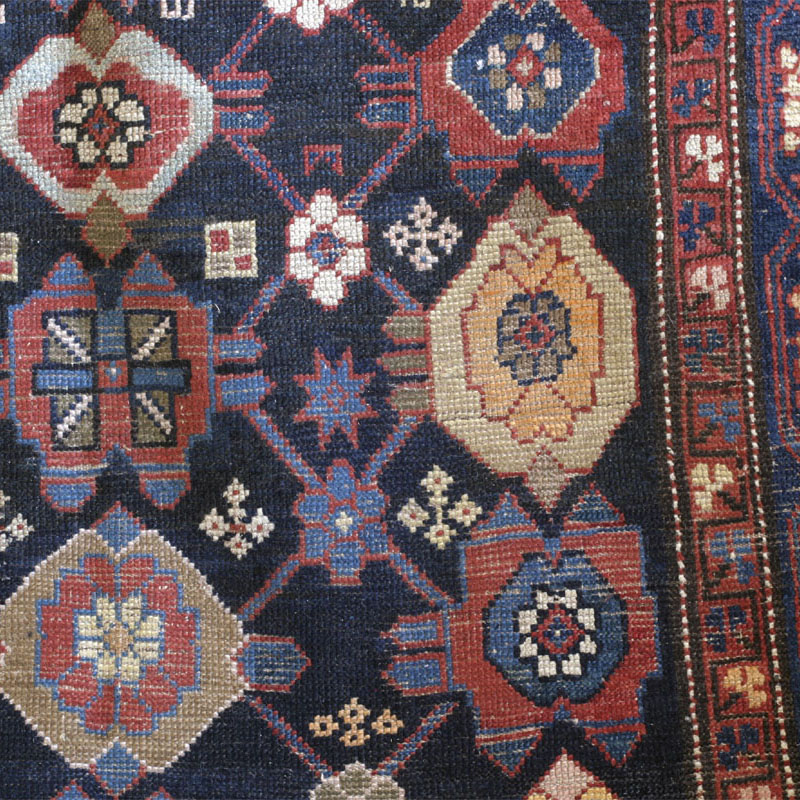This spectacular dated and signed Caucasian Armenian rug, probably from the Karabagh region, shows a bold variant of the mina khani design - a rather unusual pattern for Caucasian rugs. The individual blossoms are linked by a diagonal lattice with smaller blossoms at its crossings and a variety of secondary motives strewn in between. Interestingly, the lattice is not executed in a central area of the rug; here, we find a larger secondary motive, an angular figure-8 device crowned by a cluster of small diamonds. The larger flowers are embedded in irregular hexagonal (or octagonal?) shapes that have varying numbers of pointed studs protruding sideways. The triangular studs pointing upwards and downwards from these shapes alternate between one and two along the vertical row of blossoms, thereby creating a kind of interlocking device.
The main border shows angular blossoms in various colour set within a simple double-lined meander opening into an alternating geometric feather of plat motive in between blossoms.
The rug measures 8ft.9in. x 4ft.1in.-4ft.2in. (273 x 125-128 cm). Brown wool warps, two threads Z-spun, S-plied; off-while and pale brown or pink wool wefts, some of a darker brown. The number of weft shoots varies between 2 and 3 with as many as five in some areas (see close-up of back side). Knots are symmetrical 6.5v x 6.5h = ca. 42 kpsi, the weave is non-depressed. The handle is meaty and flexible.
A beautiful wide palette of saturated dyes, nearly all natural. If I counted correctly, this rug uses 17 different colours in a very harmonious fashion. Nice abrashed dark indigo ground, a medium shade of indgo used in the connecting studs and as main border background, and a very light shade used in the blossoms. Saturated madder red, abrashed to a slightly lighter shade of the same, and a very light madder-based rose tint. A beautifully saturated straw yellow, also in a lighter tint. Then there is a greenish mustard yellow (same on front and back, no tip fading), and a beautiful turquoise green in three shades saturated in the some secondary blossoms, in a medium and a light shade used in the shapes around blossoms. The light orange, which is used sparingly (e.g. in the centre of a yellow blossom, see detail view of the pile) is probably a stable synthetic dye, but it is nicely muted and not at all disturbing; it even shows some abrash. Then there is a purple brown in two shades, a light greenish brown somewhat darker than the mustard tone, and off-white.
Good condition, with pile lower towards the centre (see images) Sides look original, some repiling in a border area near the top left, well done and hardly noticeable. I can see no holes, tears, stains, brittle areas etc.










